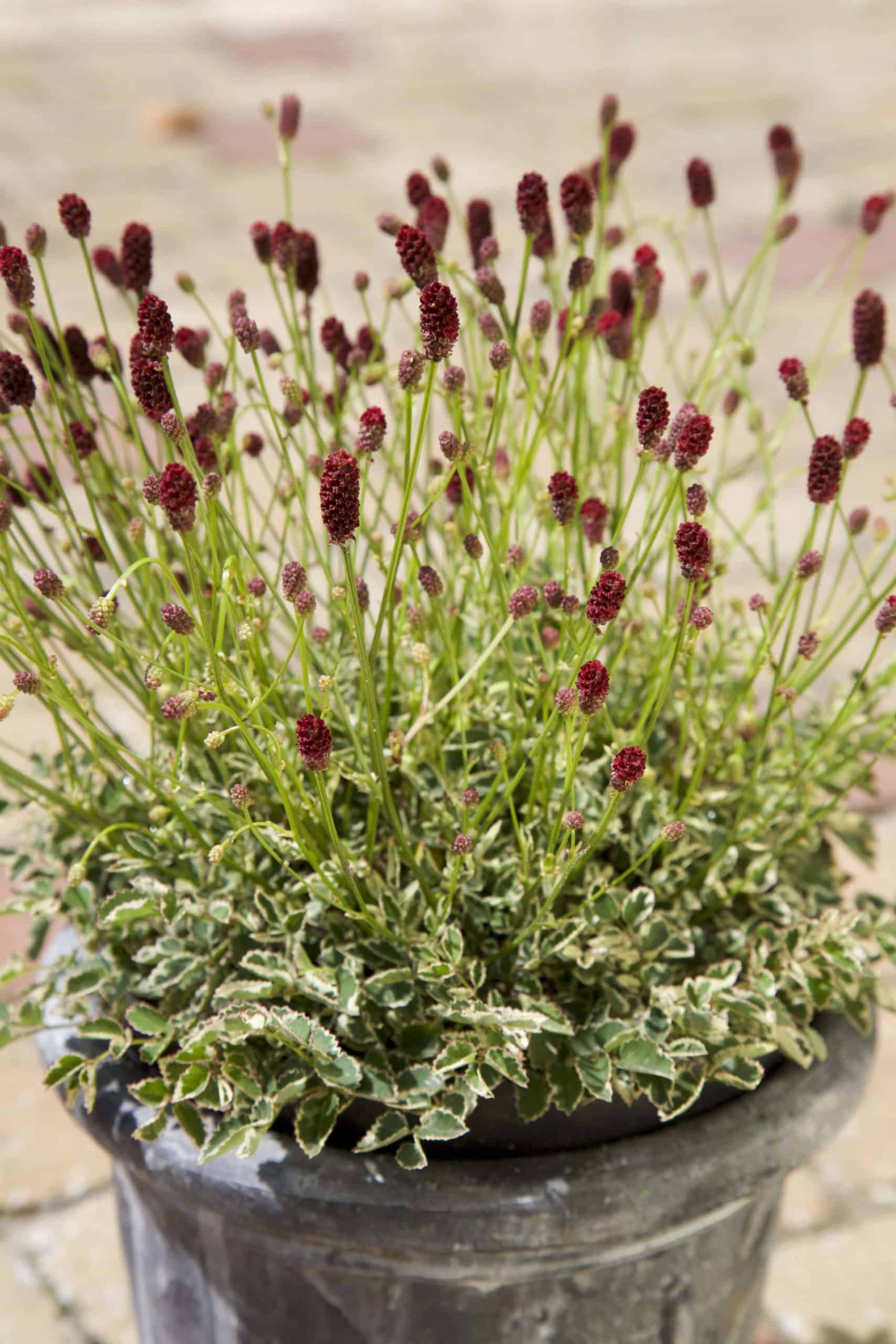
The secret’s out. Long favoured by British and European gardeners, sanguisorbas are finally starting to show up in Canadian gardens. That’s because the subtle charms of these understated perennials are more than matched by their extreme hardiness (some stand up to Zone 2 conditions), easy care and, most of all, congenial attitude toward their garden companions, especially ornamental grasses.
Sanguisorbas (a.k.a. burnets) come in a variety of flower forms and colours, from the bobble-headed ruby-red blooms of Sanguisorba officinalis to the slender, swooning red, purple or white inflorescence of S. tenuifolia. The bottlebrush flowers rise airily above the foliage, suspended on wiry spikes that range in height from 18 inches (45 cm) to a soaring seven feet (2 m).
“The blooms have a transparency you can see through,” says Larry Davidson of Lost Horizons Nursery in Acton, Ont. This see-through quality is what makes sanguisorbas so versatile; they look good whether placed at the back, in the middle or at the front of a border. Davidson suggests placing the tall S. canadensis at the back, for example, where the odd flower spike will poke up and through surrounding plants, shyly calling attention to itself, whereas little S. ‘Tanna’ makes a great edger or massed as a groundcover.
Natives of moist grasslands from North America to Asia, sanguisorbas exude a naturalistic feel, says Lambert Vrijmoed of Free Spirit Nursery in Langley, B.C. “They combine well with late-season ornamental grasses and perennials, and with the dried seedheads of beebalm and Veronicastrum [Culver’s root].”
That’s probably why they’re a favourite of Dutch naturalistic planting guru Piet Oudolf, who uses them for their look of the wilderness. In the Oudolf-designed entry walk garden at the Toronto Botanical Garden, sanguisorbas such as S. o. ‘Red Thunder’ take centre stage in late summer, when they make good friends with coneflowers, asters and ornamental grasses. “They add a nice echo in form and shape to smaller grasses, too, such as Molinia caerulea ‘Variegata’ [variegated moor grass],” says Paul Zammit, the botanical garden’s Nancy Eaton director of horticulture.
Generally, sanguisorbas have deep roots, which help them seek out moisture buried in the soil, although smaller varieties such as ‘Tanna’ have shallower roots and need more moisture. In rich soils, the taller sanguisorbas tend to flop, warns Vrijmoed, and may require staking—a practice that would spoil their airy, naturalistic forms, which, in their native environment, are supported by neighbouring grasses. To preserve their wild nature and form, grow them instead in fairly lean soil.
The foliage colour of sanguisorbas varies from grey-green (S. obtusa) to blue-green (S. o. ‘Chatto’) and even variegated (S. officinalis ‘Lemon Splash’). And, as with the West Coast native S. menziesii, they may even sport red-stained petioles (leaf stalks) that make them captivating “eye-candy,” as Vrijmoed says.
For the most part, they’re well behaved—although some may self-seed, but seedlings are easily controlled—they readily adapt to average garden soil and though they prefer full sun, many will be happy in part shade.
The hardest thing about growing sanguisorbas may be finding them. With so much going for them, you’d think they would be readily available on garden centre shelves. But because they’re tricky to grow in pots (the tall stems can be brittle and plants may wilt if not well monitored), you’re more likely to find them in specialty nurseries, where they’re often planted in display gardens. So, seek them out and ask your local garden centres to bring them in. It’s time to grow more of these great perennials in our Canadian gardens.
Six months of sanguisorba blooms
Nurseryman Lambert Vrijmoed first encountered sanguisorbas while working at Piet Oudolf’s nursery near Hummelo, Netherlands. Vrijmoed since established Free Spirit Nursery in Langley, B.C., where he is developing new strains and cultivars. He recommends growing these sanguisorbas for a full season of bloom.
Note: Bloom times may vary, depending on region and weather.
Early May
S. menziesii Plump, fluffy, deep burgundy flowers hold their colour to late in the season; dark green foliage is tinged with blue; 32 inches (80 cm); Zone 2
S. officinalis ‘Arnhem’ Vibrant red flowers hover on stems six feet (1.8 m) tall; Zone 4
S. stipulata Low-growing species with erect, white bottlebrush flower spikes that reach 18 inches (45 cm) tall; Zone 4
S. tenuifolia var. parviflora A native of eastern Russia with ferny foliage and white flowers that tower atop four-foot (1.2-m)-tall stems; Zone 4
Late May to mid-July
S. officinalis Upright, oval-shaped, long-blooming, ruby-red flowers bob 40 inches (1 m) above spreading clumps of mid-green foliage; may self-seed; Zone 4
S. tenuifolia var. alba Its almost seven-foot (2-m) stature makes this one of the most dramatic of the sanguisorbas. Long, slender, white flowers droop elegantly; may self-seed in some areas; Zone 4
Late August to early October
S. canadensis Upright, fluffy, creamy white bottlebrush flowers reach five feet (1.5 m) tall on sturdy stalks; native to eastern North America; Zone 4
S. tenuifolia ‘Finale’ Late-flowering, large, dark red, thimble-like flowers bloom on tall, stiffly upright stems; six feet(1.8 m); Zone 4
S. tenuifolia var. purpurea Upright, reddish purple flower spikes rise above a mound of serrated, dark green leaves; six feet (1.8 m); Zone 4

Sanguisorba is a favorite of mine. I purchased my first from Lost Horizons many years ago, and that purchase precipitated a collection. I would add them to the garden for the foliage alone. If you are adept at starting plants from seed, you can usually find a species or two listed on the Ontario Rock Garden & Hardy Plant Society (ORG&HPS) seed exchange. Gardens North and Chilterns also have some seed on offer.